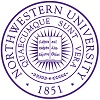专业详情
Materials science and engineering is concerned with synthesis, processing, structure, and properties of metals, ceramics, polymers, and other materials, with emphasis on understanding and exploiting relationships among structure, properties, and applications requirements. Our graduate research programs encompass projects in areas as diverse as polycrystalline silicon, electronic ceramics grain boundaries and interfaces, microstructure and stresses in microelectronics thin films, oxide thin films for novel sensors and fuel cells, optical diagnostics of thin-film processing, ceramic nanocomposites, electrodeposition and corrosion processes, structure, properties, and transmission electron microscopy and crystal orientation mapping, magnetic thin films for giant and colossal magnetoresistance, chemical synthesis of nanoscale materials, nanocrystals, carbon nanotubes, nanostructure analysis using X-ray and neutron diffraction techniques, and electronic structure calculation of materials using density functional and dynamical mean-field theories. Application targets for polycrystalline silicon are thin film transistors for active matrix displays and silicon-on-insulator structures for ULSI devices. Novel applications are being developed for oxide thin films, including uncooled IR focal plane arrays and integrated fuel cells for portable equipment. Long-range applications of high-temperature superconductors include efficient power transmission and highly sensitive magnetic field sensors.
Thin film synthesis and processing in this program include evaporation, sputtering, electrodeposition, and plasma and laser processing. For analyzing materials structures and properties, faculty and students employ electron microscopy, scanning probe microscopy, cathodoluminescence and electron beam–induced current imaging, photoluminescence, dielectric and anelastic relaxation techniques, ultrasonic methods, magnetotransport measurements, and X-ray diffraction techniques. Faculty members have research collaborations with Lucent, Exxon, IBM, and other New York area research and manufacturing centers, as well as major international research centers. Scientists and engineers from these institutions also serve as adjunct faculty members at Columbia. The National Synchrotron Light Source at Brookhaven National Laboratory is used for high-resolution X-ray diffraction and absorption measurements.
Entering students typically have undergraduate degrees in materials science, metallurgy, physics, chemistry, or other science and engineering disciplines. First-year graduate courses provide a common base of knowledge and technical skills for more advanced courses and for research. In addition to course work, students usually begin an association with a research group, individual laboratory work, and participation in graduate seminars during their first year.
All academic programs in materials science and engineering are coordinated through by the MSE Program in the Department of Applied Physics and Applied Mathematics.


